In the 19th century, New York City was a burgeoning industrial and commercial metropolis - the largest city in the United States and second largest in the world. As the city's population increased, people began to call for construction of an underground railway. Many unusual engineering challenges had to be overcome, not the least of which was construction in a dense urban area. After lengthy legal battles over property rights and the debt limit of the city, ground was broken on March 24, 1900.
1977


The Wilkinson Mill, situated on the west bank of the Blackstone River in Pawtucket, was built between 1810 and 1811 by machinist Oziel Wilkinson. Constructed in stone rubble, three and one-half stories high, the mill played a critical role in the history of textile technology, in steam power generation, and in the development of the machine tools industry. The Wilkinson family came to Pawtucket in the 1780s and set up a shop to forge anchors, build presses for oil works, and mold iron screws used in paper pressing machinery.
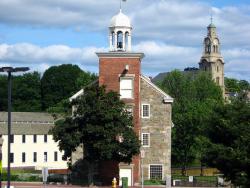
The Wilkinson Mill, situated on the west bank of the Blackstone River in Pawtucket, was built between 1810 and 1811 by machinist Oziel Wilkinson. Constructed in stone rubble, three and one-half stories high, the mill played a critical role in the history of textile technology, in steam power generation, and in the development of the machine tools industry.
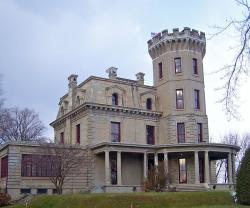
BrookRyeState: NYCountry: USAWebsite: http://www.asce.org/Project/Ward-House/Creator: Ward, William , Mook, Robert
It is a large, imposing structure (over a dozen rooms and spacious halls) dominated by a four-story octagonal tower at one corner and a second shorter square tower at another corner containing tanks for potable and fire-fighting water supply.
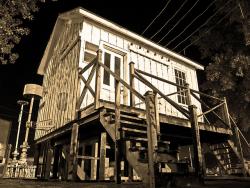
The plant began operation only twenty-six days after Thomas Edison's first steam plant began operating on Pearl Street in New York (NL 46). On September 30, 1882, an Edison "K" type dynamo produced electricity from a water-powered turbine to light three buildings (two paper mills and the H.J. Rogers home), at rate of about 12 1/2 kilowatts. It is the first Edison hydroelectric central station to serve a system of private and commercial customers in North America. The story of its development provides keen insight into the nation's first experiences with the electric light.

The Savannah city plan, whose execution began in 1733, is distinguished from those of previous colonial towns by the repeated pattern of connected neighborhoods, multiple squares, streets, and designed expansion into lands held by the city. It is unique in the history of urban planning in a number of aspects, not the least of which is that the squares allow for more open space in Savannah than any city layout in history.
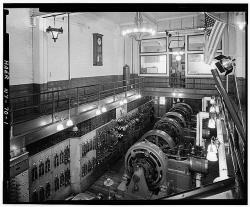
Steam and the inexpensive electricity it could produce brought about dramatic technical growth in the United States. Developed during the last century, reliable and efficient steam engines were the forerunners of today's massive generating facilities. A rare survivor of the period, the Pratt facility is the oldest generating plant of its kind in the Northeast and embodies the typical features of engines in a row, open-front marble switchboard, and an observation balcony at street level.

Used to lift molten iron to molds where it was cast into pipe, jib cranes were the sole means of conveyance in the pit-casting process. When pit casting was replaced by centrifugal casting in the 1920s, many pits were filled and the cranes were used to produce cast iron fittings or general maintenance work. Only one jib crane remained at the American Cast Iron Pipe Company in recent years, and it was probably the last pit-cast jib crane to operate, which it did until it was given to the Sloss Furnace Museum in early 1986.
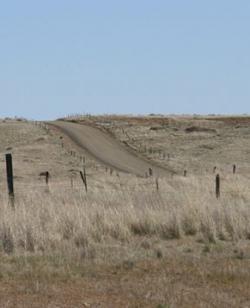
The Mullan Road was designed to facilitate the movement of troops and supplies across the Rocky Mountains between the Missouri River basin in the Great Plains and the Columbia River Basin at the Columbia Plateau during times of Indian hostilities. But because peace was reached with the Northwest Indians early on, the road was used only once (in 1860) for military means. Instead, it became a popular thoroughfare for emigrants and fortune-seekers during the Montana and Idaho gold rushes of the 1860s.

As a practical conveyance during the horse-and-buggy era, the Monongahela Incline was one of seventeen built and operated in Pittsburgh in the last century. Of the seventeen, the Monongahela and the Duquesne are the only two remaining operating units. While the Mt. Washington Incline was known as a coal-carrying incline plane in 1854, the Monongahela Incline is probably the earliest passenger-carrying incline in the United States and has been in continuous successful service since its construction.
Innovations
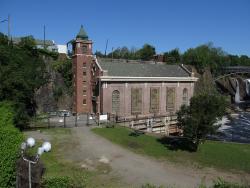
Visionary Alexander Hamilton, the United States' first Secretary of the Treasury, visited the Great Falls of the Passaic River with George Washington in 1778. The 77-foot-high, 280-foot-wide waterfall inspired his dream of abundant, inexpensive energy as the means for economic independence from…
Read More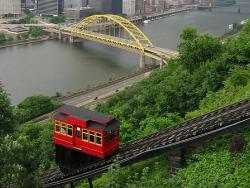
Designed by Sam Diescher, son-in-law of the Monongahela's designer John Endres, the Duquesne Incline opened May 20, 1877, as the second of seventeen built and operated in the Pittsburgh area. It has operated with only minor interruptions for the last one hundred years. A preservation group from…
Read More
At a time when steam power was finding its first uses in America, Philadelphia opened two steam pumping stations, January 1801, to lift water from the Schuylkill River and distribute it through the city's wooden pipes and mains. By 1811 a new water power works was begun on the river near Morris…
Read More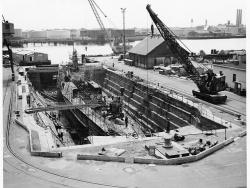
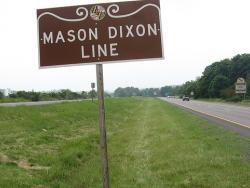
The granite milestones marking the Mason-Dixon Line bear crests from the two parties involved in the land-grant dispute, the families of William Penn and Charles Calvert (also known as Lord Baltimore).
What is now generally referred to as the Mason-Dixon Line was established by the…
Read More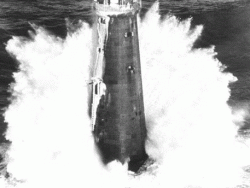
Minot's Ledge is a wave-swept rock formation in a rocky area of ocean about a mile off the Cohasset shore near Boston. Numerous serious shipwrecks prompted the government to erect a beacon there, and construction began in the summer of 1847.
The light, constructed on tall iron legs…
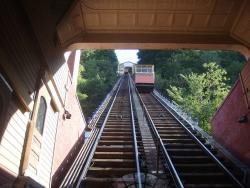
As a practical conveyance during the horse-and-buggy era, the Monongahela Incline was one of seventeen built and operated in Pittsburgh in the last century. Of the seventeen, the Monongahela and the Duquesne are the only two remaining operating units. While the Mt. Washington Incline was known…
Read More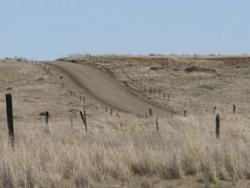
The Mullan Road was designed to facilitate the movement of troops and supplies across the Rocky Mountains between the Missouri River basin in the Great Plains and the Columbia River Basin at the Columbia Plateau during times of Indian hostilities. But because peace was reached with the Northwest…
Read More
Used to lift molten iron to molds where it was cast into pipe, jib cranes were the sole means of conveyance in the pit-casting process. When pit casting was replaced by centrifugal casting in the 1920s, many pits were filled and the cranes were used to produce cast iron fittings or general…
Read More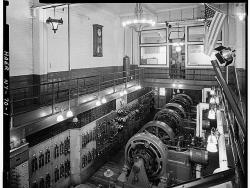
Steam and the inexpensive electricity it could produce brought about dramatic technical growth in the United States. Developed during the last century, reliable and efficient steam engines were the forerunners of today's massive generating facilities. A rare survivor of the period, the Pratt…
Read More
The Savannah city plan, whose execution began in 1733, is distinguished from those of previous colonial towns by the repeated pattern of connected neighborhoods, multiple squares, streets, and designed expansion into lands held by the city. It is unique in the history of urban planning in a…
Read More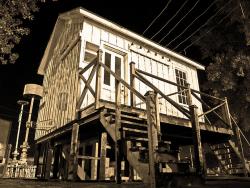
The plant began operation only twenty-six days after Thomas Edison's first steam plant began operating on Pearl Street in New York (NL 46). On September 30, 1882, an Edison "K" type dynamo produced electricity from a water-powered turbine to light three buildings (two paper mills and the H.J.…
Read More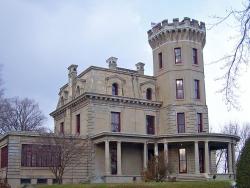
It is a large, imposing structure (over a dozen rooms and spacious halls) dominated by a four-story octagonal tower at one corner and a second shorter square tower at another corner containing tanks for potable and fire-fighting water supply.
The Ward House, named for its builder William…
Read More
The Wilkinson Mill, situated on the west bank of the Blackstone River in Pawtucket, was built between 1810 and 1811 by machinist Oziel Wilkinson. Constructed in stone rubble, three and one-half stories high, the mill played a critical role in the history of textile technology, in steam power…
Read More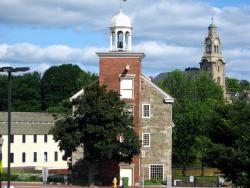
The Wilkinson Mill, situated on the west bank of the Blackstone River in Pawtucket, was built between 1810 and 1811 by machinist Oziel Wilkinson. Constructed in stone rubble, three and one-half stories high, the mill played a critical role in the history of textile technology, in steam power…
Read More
In the 19th century, New York City was a burgeoning industrial and commercial metropolis - the largest city in the United States and second largest in the world. As the city's population increased, people began to call for construction of an underground railway. Many unusual engineering…
Read More

